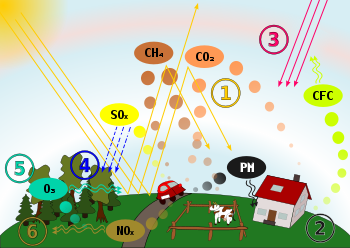The Canary plans to update smoke and carbon monoxide
detectors using similar home automation technologies seen in smart-kitchen
appliances, HVAC systems, lighting systems, and even door locks. In 2009,
Intel joined IPSO Alliance to promote IP
addresses in
smart devices so that in the case of a fire, after the smoke detector is
triggered, the smoke detector would then turn off all gas appliances and then
send alerts via smartphone. The Canary has the potential to
develop into the kind of smart device that would also have the ability to turn
of any appliances in case of an emergency.
In 2003, the US Navy announced that by
2004, they could have chemical detectors equipped
in office buildings, factories, shopping malls and other public buildings to
prevent against terrorist attacks.
U.S. Department of Homeland Security
also launched an initiative to put poison-and-chemical-reading sensors directly
into cell phones. The Canary may eventually be able to adopt
the ability to detect chemicals as well as other air quality issues besides
smoke and carbon monoxide.
The creators also plan to use Canary to
track air quality of
living spaces or other indoor environments within a city. By making citizens more aware of the air quality as
well as an opportunity to choose unpolluted air, this may increase the health
of the public and life expectancy. Data will be collected
documented through a web API made accessible to the public.
However, this data can only be collected once the network
of Canary detectors reach “critical mass”. As
the network effect states: the larger the number of people using a network, the
more valuable that network becomes.

No comments:
Post a Comment